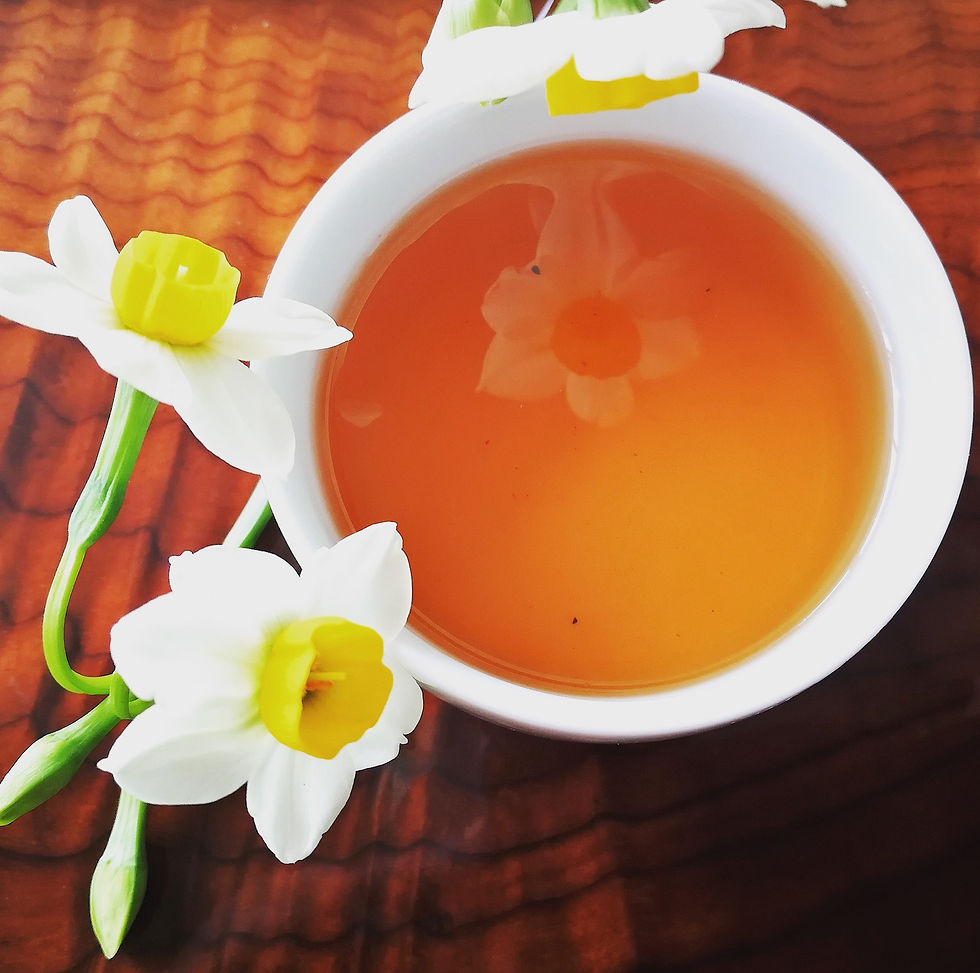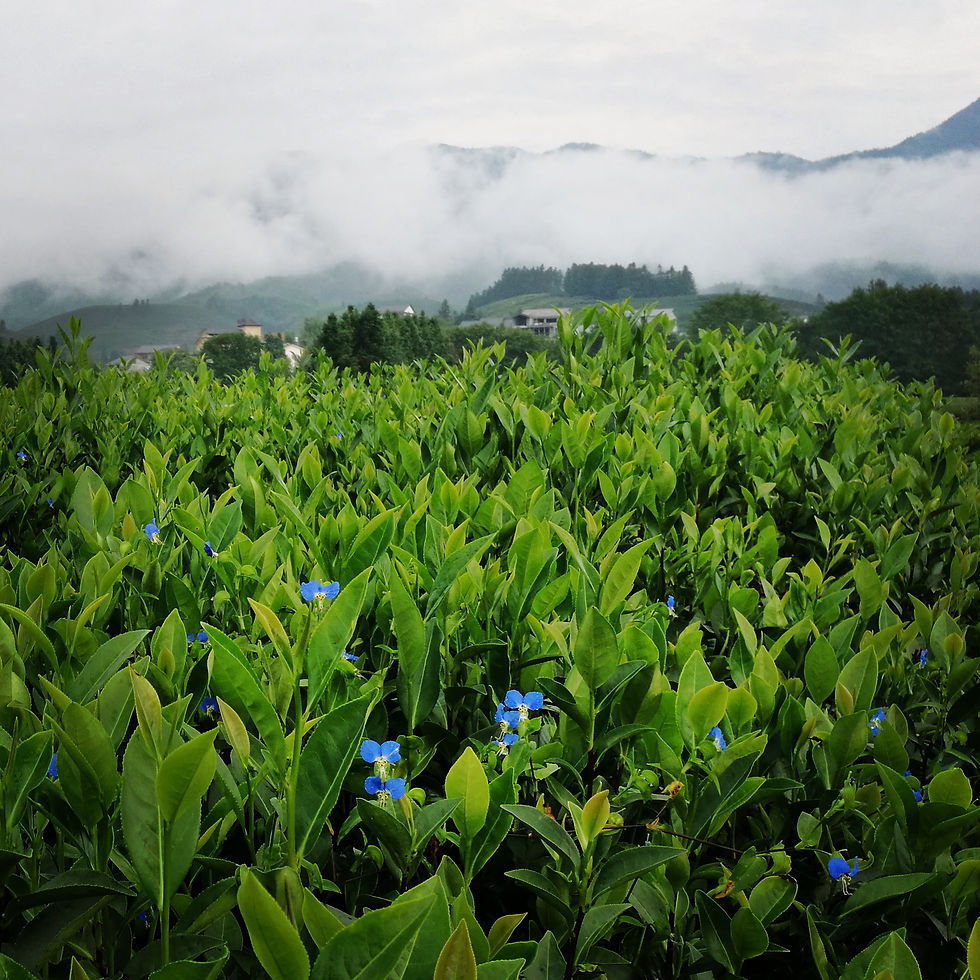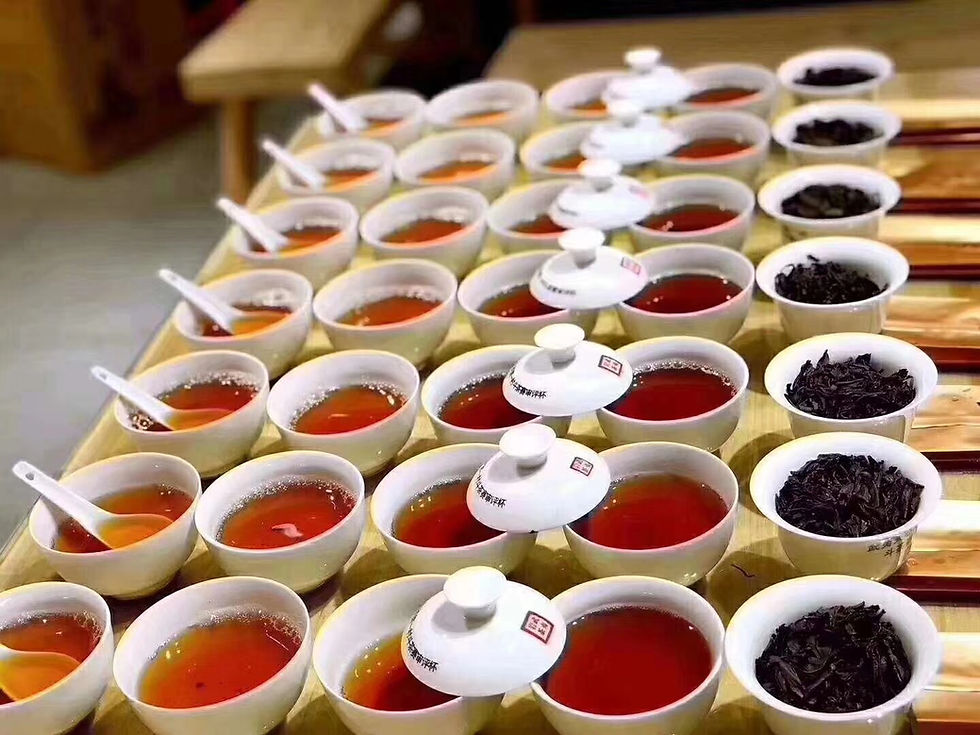Blog 81: Similarities That All Good Teas Share
- Valley Brook Tea

- Dec 28, 2018
- 4 min read
To tea makers, all teas begin as fresh leaves. Depending on where these fresh leaves grow and how they are processed, we have many kinds of teas, such as green tea, white tea, oolong tea, black tea and dark tea (e.g. Pu’er belongs to dark tea).
Every category of teas is unique and special. Even within the same category, two different teas can have very contrasting tastes, aromas and mouthfeel. The individual characters of all teas constitute the wonderful world of tea.

When introducing and explaining these different teas, we tend to focus a lot on the differences. However, focusing solely on the differences can often be misleading. Subconsciously, many tea lovers believe there are more differences than similarities in different teas.
This is perhaps why some tea lovers feel the struggle when choosing a tea in a tea category that they are not well acquainted.
In fact, all good teas share more similarities. In other words, all good teas are similar in aroma, tea soup color, mouthfeel and leaf bottom. (Please refer to Blog 59 for the introduction of “leaf bottom”.)

- The Aroma
The aroma of a tea is the first essence we can sense. The component of a tea’s aroma is one fo the most significant indicators of a quality tea. A good tea never fails to please us with a refreshing and natural floral/fruity fragrances.
A tea shouldn’t have any unpleasant and abnormal odors. The common bad odors are: glassy, burnt/scorched, moldy, spiced and artificial fragrance.
Some of these bad odors are associated with bad tea-making, and the rest are linked to bad storage environment. For example, the grassy odor can be caused by insufficient hot fixation (withered leaves going through a heated process to kill off the fermentation). Moldy odor is the result of tea leaves deteriorating in damp conditions.
If you open a bag of tea and detect any odors mentioned above, it can’t possibly be a good tea. On the other hand, if a tea doesn’t have any smells, good or bad, it is not a good tea either.

- Tea Soup and Mouthfeel
(Recently, we published two blogs on the causes of bad tea soups and numb mouthfeel. Please click here for Blog 77 , Blog 78 and Blog 79.)
To most teas, good quality means clean and clear tea soup. Clear tea soup also reflects good tea-making. To fermented teas such as black tea and dark tea, a clear tea soup shows a tea maker’s good handling of the fermentation process.
Furthermore, a clear tea soup also indicates a tea has better tea-making, transportation, and storage environment.
Of course, there are some exceptions. If a tea is made with fresh leaves that have lots “white hair”, its tea soup may not be clear as these white hair could falls into the tea soup. This is quite common in fresh green tea, silver needle (white tea) and some black teas (e.g. Dragon Beard, a Jin Jun Mei grade black tea). You can also read more about “white hair” in our Blog 46.
A good tea also needs a good mouthfeel.
Despite teas have all kinds of distinct flavors, they normally share similar mouthfeel.
Good quality teas, no matter what tea it is, should always deliver a rich and smooth mouthfeel. Those teas that taste like “flavored water” are often made with bad fresh leaves low on nutrients. That’s why these teas need to be steeped for minutes to produce any taste.
Of course, the ability to deliver a constant mouthfeel is also crucial. In our tea-making, one serving of a good tea (5g for white/black tea, 7-8g for oolong tea) needs to deliver at least 8-10 infusions (approximately 1L/33.8 fl oz of tea).

- The Leaf Bottom (叶底)
Finally, it’s the leaf bottom. (Click here for Blog 59: introduction to leaf bottom.)
To inspect the leaf bottom, we have to infuse it first. Leaves fully expand themselves after a few infusions. Expanded leaf bottom can tell us more about the quality of tea leaves. Good quality tea has a vivid leaf bottom as if all leaves are still thriving on tea plants.
A bright leaf bottom can tell us at least two things: good quality fresh leaves and careful tea-making.
All good teas, regardless what tea it is or how it is packaged, need to have fresh and alive leaf bottom. (see picture below for a good leaf bottom.) Bad teas, nonetheless, would have a leaf bottom that looks like over-boiled vegetables.

These are the common characters that all good teas share. If you are a black tea lover and want to try some green tea, oolong tea, or white tea, you should always look for exactly the same set of characters.
Yes, different teas have different tastes, and the taste is what most tea lovers value the most. But the taste is only one aspect of a tea. If we only rely on the taste, we can easily be fooled by a spiced bad tea.
Good teas are similar in many ways. If you find a tea that excels in every aspect, you’re drinking the right tea.
We hope you enjoyed today’s blog. As always, if you have questions or suggestions, please leave a comment, tweet us @valleybrooktea or email the author directly at zhang@valleybrooktea.com. Please also follow us on Instagram @valleybrooktea and join our mail list to get our daily tea updates and our latest promotions!




Comments